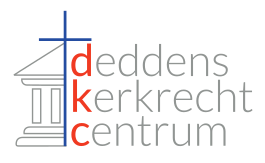In the realm of climate control systems, the quality of the setup plays a pivotal role in ensuring long-lasting performance. Often, individuals face pitfalls during the setup process that can ultimately lead to complications down the line. Recognizing these pitfalls is key to achieving a successful project.
From overlooking crucial measurements to neglecting proper equipment placement, various errors can undermine the efficiency of the unit. A well-executed setup not only enhances comfort but also maximizes energy savings, making awareness of potential blunders invaluable for homeowners.
As one embarks on the task of establishing a reliable system, it is essential to approach the process with diligence and a keen eye for detail. By being informed about frequent missteps, homeowners can make educated decisions and enjoy a comfortable environment devoid of unnecessary issues.
Improper Sizing of HVAC Units
Choosing the right size for heating and cooling systems is critical for optimal performance. An oversized unit can lead to short cycling, where the system turns on and off rapidly, failing to effectively regulate temperature and conditioning the air. This behavior increases energy consumption and may cause wear and tear on components, resulting in more frequent repairs.
On the other hand, an undersized unit struggles to meet the heating or cooling demand, leading to discomfort and excessive strain on the system. Such units often run continuously, diminishing their lifespan and efficiency. In both scenarios, the overall operation becomes less economical and increases utility bills.
To avoid these challenges, accurate load calculations should be conducted to determine the precise requirements for the space being serviced. Factors such as insulation quality, window size, and the number of occupants must be taken into account to ensure a proper fit. Collaboration with experienced technicians can significantly mitigate these sizing issues and enhance system performance.
Neglecting Ductwork Inspections
One of the frequently overlooked areas in a heating and cooling setup is the inspection of duct systems. Ductwork plays a vital role in the overall performance of climate control units, and failing to assess this component can lead to a series of setbacks. Common complications such as leaks, blockages, or inadequate airflow can severely hamper efficiency and comfort.
During the initial phase of setting up a system, it’s crucial to ensure that the ductwork is not only installed correctly but also maintained effectively. Signs of troubles, including uneven temperatures and increased energy bills, hint at the need for thorough evaluations. Regular checks can expose issues like poorly sealed connections or outdated materials that can significantly impact system operation.
Following the best practices for inspections includes ensuring that the air ducts are clean and free from debris, as well as sealing any potential leaks. Consulting with experts can guide homeowners and contractors in identifying and rectifying problems that might arise with the ductwork. For additional information on avoiding pitfalls in HVAC systems, consider visiting https://artacservice.com/.
In conclusion, overlooking duct inspections is a mistake that can cascade into larger issues. Prioritizing ductwork assessments aids in creating an optimal environment while enhancing the performance of the entire system.
Ignoring Local Building Codes and Regulations
Failing to adhere to local construction codes and regulations during the setup of a heating and cooling system can lead to significant challenges. Local authorities establish guidelines to ensure safety, energy efficiency, and environmental standards, which are designed to protect homeowners and the community at large.
Overlooking these rules can result in various complications, such as costly fines, mandatory removal of non-compliant systems, or even legal action. Furthermore, installations that do not meet established codes may void manufacturer warranties, putting your investment at risk.
Homeowners should engage licensed professionals who are well-versed in the specific requirements of their area. It is best practice to consult with local building departments to obtain necessary permits and inspections, ensuring that every aspect of the system installation aligns with housing regulations.
By prioritizing compliance with local laws, homeowners not only avoid financial penalties but also secure the peace of mind knowing that their systems are safely and properly installed, contributing to the longevity and performance of their HVAC units.
Neglect of Professional Maintenance Scheduling
One of the most significant oversights that homeowners make is disregarding the necessity of routine maintenance for their heating and cooling systems. Regular upkeep not only prolongs equipment lifespan but also ensures optimal performance throughout the year.
Here are some best practices for effective maintenance scheduling:
- Set appointments at least twice a year: Arrange for a professional technician to inspect and service the system before the peak seasons of summer and winter.
- Change filters regularly: Filtration systems should be replaced according to the manufacturer’s recommendations to maximize airflow and efficiency.
- Keep outdoor units clean: Ensure that the area around outdoor units is free from debris, vegetation, or anything that might obstruct airflow.
Failing to schedule regular check-ups can lead to various problems:
- Poor energy efficiency: Lack of maintenance can result in higher energy bills due to inefficient operation.
- Unexpected breakdowns: Systems that are not routinely serviced are more prone to failures, leading to costly repairs.
- Decreased indoor comfort: Unmaintained systems may struggle to maintain desired temperatures, affecting overall comfort in the home.
By prioritizing systematic maintenance, you can improve reliability and enjoy a well-functioning heating and cooling system. Establishing a schedule with a trusted service provider ensures that your equipment remains in peak condition, ready for any weather.
